25 Rich & Flavorful Traditional Italian Pork Dishes
Italian pork dishes represent a culinary treasure trove of rich, hearty flavors deeply rooted in regional traditions.
Generations of passionate cooks have transformed simple ingredients into mouthwatering masterpieces that tantalize taste buds across the country.
Regional kitchens celebrate these remarkable recipes with remarkable techniques passed down through family lines.
Each preparation showcases the incredible versatility of pork, transforming humble meat into extraordinary gastronomic experiences.
Local chefs understand how subtle spices and careful cooking methods elevate these classic preparations beyond mere sustenance.
The cultural significance of these dishes extends far beyond nutrition, representing community, connection, and cherished memories.
Passionate food lovers appreciate the intricate balance of textures and flavors that make these recipes truly remarkable.
Below are 25 traditional Italian pork dishes that will transport you straight to the heart of Italian cuisine:
Traditional Italian Pork Dishes for Classic Comfort
Italian kitchens have mastered pork in every delicious form. Whether roasted, braised, or rolled, these time-honored dishes bring friends and family together around the table.
Porchetta Umbra
Porchetta embodies Italy's most celebrated pork roast, featuring a succulent whole pig belly meticulously rolled and seasoned with aromatic herbs and spices.
Regional variations across Italy showcase different preparation techniques, though Umbria's traditional style stands out with its distinctive wild fennel and internal organ stuffing.
Lazio claims porchetta's original birthplace, where butchers carefully gut and trim the entire pig before transforming it into a culinary masterpiece.
Salt, pepper, and garlic form the core seasoning blend that infuses the meat with rich flavors.
Professional butchers roll the meat tightly, ensuring maximum flavor concentration and perfect texture.
Slow roasting creates a crispy exterior with a golden, crunchy crackling that contrasts against the tender inner meat.
Each slice promises a complex blend of herbal and meat flavors that represent Italian rustic cooking traditions.
Small villages and rural communities throughout central Italy continue celebrating this iconic roast during festivals and community gatherings.
Porchetta
Porchetta is a sumptuous Italian pork roast that celebrates the art of slow-roasted meat preparation.
Regional Italian cooks transform a whole pig or piglet by carefully deboning and generously seasoning it with aromatic herbs like rosemary, fennel seeds, and garlic.
Stuffing variations depend on local traditions, potentially including liver, fat, or additional meat pieces enhanced with spices.
Wood fire roasting creates a crispy exterior while maintaining an incredibly moist interior.
Central Italy, particularly Ariccia in Rome's province, claims this dish's origin and continues to perfect its preparation.
Sliced paper-thin, porchetta emerges as a versatile dish served warm or cold alongside rustic bread.
Italian communities embrace this culinary tradition with passionate dedication.
Each region adds its unique twist to this beloved meat preparation.
Porchetta Di Ariccia
Porchetta di Ariccia is a legendary Italian pork roast originating from Rome's Lazio region, celebrated for its mouthwatering flavor and traditional preparation method.
Skilled butchers carefully debone mature pigs and generously season the meat with aromatic herbs like fennel, rosemary, and garlic.
Wood-fired spit roasting transforms the meat into a succulent masterpiece with irresistibly crispy skin that locals and visitors crave.
Regional festivals and street markets showcase this beloved dish, where food trucks serve slices of the juicy roast to eager crowds.
Romans consider porchetta a culinary treasure deeply rooted in their gastronomic culture.
Italian culinary traditions carefully preserve the ancient roasting techniques passed down through generations.
Wood smoke and herb-infused meat create an unforgettable sensory experience that captures the essence of Italian cuisine.
Naming derives from the Italian word "porco," meaning pig, reflecting the dish's simple yet profound connection to local agricultural heritage.
Capocollo
Capocollo represents a premium Italian dry-cured pork delicacy sourced from a pig's neck and shoulder muscles, distinguished by its exceptional marbling and intense flavor profile.
Skilled Italian butchers carefully select and season this meat with a blend of herbs, garlic, and spices before slowly curing it to develop deep, complex taste dimensions.
Regional variations across Italy showcase different seasoning techniques and curing methods that enhance the meat's natural richness.
Professional butchers typically slice capocollo paper-thin for charcuterie boards, sandwiches, and antipasti platters.
Salt, black pepper, and red pepper flakes frequently accent its robust taste.
Traditional curing processes involve carefully massaging spices into the meat before hanging it to dry for several weeks or months.
Refrigeration helps preserve capocollo's signature texture and prevents spoilage.
Mountain and coastal regions of Italy contribute unique flavor nuances to this beloved protein.
Pork Involtini (Involtini Di Maiale)
Involtini di maiale showcases Tuscan culinary mastery through elegant pork rolls stuffed with creamy ricotta and earthy spinach.
Thin pork loin slices become delicate wrappers for a rich filling of ricotta blended with fresh spinach, seasoned simply with salt, pepper, and nutmeg.
Skilled cooks carefully roll each slice around the fragrant mixture, wrapping the bundles in crispy pancetta and securing them with toothpicks.
Olive oil provides a golden sear to the exterior, while splashes of dry white wine tenderize and enhance the meat's natural flavors.
Italian technique transforms basic ingredients into a sophisticated dish that speaks to regional cooking traditions.
Mediterranean ingredients create a balanced meal with layers of texture and taste.
Each bite reveals the careful preparation and deep culinary heritage of Tuscany.
Regional techniques elevate humble pork into an elegant dining experience.
Su Porceddu
Su porcheddu represents Sardinian culinary mastery through slow-roasted suckling pig prepared with ancient techniques.
Sardinian families select young pigs around 40 days old to ensure tender, succulent meat with rich flavor profiles.
Skilled cooks meticulously remove pig hair using boiling water and season the meat with simple ingredients like olive oil, salt, pepper, and wild fennel.
Traditional roasting occurs in fire pits filled with embers where the pig is carefully wrapped in fragrant myrtle leaves.
Slow cooking transforms the meat into a crispy exterior with juicy inner layers that melt in your mouth.
Sardinians typically serve this dish during festive celebrations and special family gatherings.
Regional pride surrounds this roasting method passed through generations.
Myrtle leaves contribute an aromatic essence that distinguishes su porcheddu from other roasted meat preparations.
Spezzatino Con Piselli
Spezzatino con piselli is a rustic Italian pork stew simmered with rich red wine and tender green peas.
Italian home kitchens traditionally prepare this hearty one-pot meal by slowly braising cubed pork until deeply flavorful and meltingly tender.
Olive oil creates a fragrant base as onions and garlic caramelize in the pan before the meat browns to seal in its natural juices.
Pureed tomatoes add depth and complexity to the sauce, while red wine infuses the meat with subtle complexity.
Peas introduce a sweet, fresh element that balances the robust meat flavors.
Salt and black pepper enhance the dish's natural seasonings, creating a comforting main course.
Families often serve this stew in large, warm bowls during cool evenings.
Regional variations might include additional herbs or different meat cuts, reflecting Italy's diverse culinary traditions.
Arista
Arista is a succulent Tuscan roast pork dish originating from Florence, celebrated for its simple yet robust flavors and rich historical roots.
Lean pork loin transforms into a mouthwatering centerpiece when generously rubbed with finely chopped rosemary, garlic, salt, and pepper before being tightly secured with kitchen twine.
Generous drizzles of extra-virgin olive oil ensure the meat stays moist during slow roasting, creating a beautiful golden-brown exterior that seals in incredible taste.
Medieval culinary history suggests the dish earned its name in 1430 when Byzantine Patriarch Bessarion exclaimed "Aristos!" (meaning "best" in Greek) after tasting the roast during an ecumenical council in Florence.
Traditional preparation involves carefully turning the meat while cooking to develop complex flavors and ensure even roasting.
Once complete, the arista is sliced thin and served either hot or cold, accompanied by its own flavorful pan gravy.
Tonno Del Chianti
Tonno del Chianti is a deceptive Tuscan specialty crafted from pork that cleverly mimics tuna's appearance and texture.
Butcher Dario Cecchini from Panzano pioneered this innovative dish using suckling pig meat prepared with white wine and aromatic herbs.
Traditional preparation involves slow-cooking pork leg or loin until tender and succulent.
Artisan butchers carefully slice the meat to resemble tuna's distinctive shape and color.
Glass jars filled with rich Tuscan olive oil preserve the meat for extended storage.
Historic recipes emerged from rural waste-reduction practices that transformed pork into a versatile delicacy.
Regional Tuscan culinary techniques ensure each bite delivers intense flavor and smooth texture.
Porchetta (Marche)
Porchetta represents a succulent Italian pork roast featuring an expertly prepared whole pig belly rolled with aromatic herbs and spices.
Originating in Lazio, this classic dish has spread across Italy with regional variations highlighting local flavor profiles.
Marche region specializes in preparing porchetta with wild fennel, abundant garlic, and generous salt and pepper seasoning.
Butchers carefully gut and trim the entire pork belly before meticulously rolling it with selected herbs and spices.
Slow roasting creates a crispy golden exterior while maintaining incredible internal moisture and tenderness.
Salt penetrates deep into the meat, enhancing its rich flavor and creating an irresistible texture.
Traditional preparation requires precise techniques passed through generations of Italian families.
Porchetta serves as a centerpiece at festivals, celebrations, and weekend family gatherings throughout central Italy.
Bombette
Bombette are compact, flavor-packed meat rolls bursting with Pugliese culinary tradition, originating from southern Italy's charming Puglia region.
Small pork slices wrapped around creamy canestrato or caciocavallo cheese, pancetta, parsley, garlic, and seasonings create these irresistible grilled delicacies.
Wood-fire cooking imparts a distinctive smoky essence that elevates their taste profile.
Toothpicks secure these rolled morsels during grilling, ensuring the fillings remain intact.
Street vendors and local butchers frequently prepare bombette as quick street food or festival fare.
Regional red wines like Primitivo perfectly complement their rich flavors.
Modern adaptations now include beef, chicken, and plant-based versions.
Restaurants and home cooks across Italy continue celebrating these compact, flavorful "little bombs" that showcase Pugliese gastronomic creativity.
Arrosto Di Maiale Con Latte
Arrosto di maiale con latte represents a classic Florentine pork roast slow-cooked in milk, transforming simple ingredients into a rich culinary experience.
Tender pork loin gets rubbed with salt, pepper, and rosemary before browning in butter to create a golden exterior.
Garlic enters the pot, adding depth to the developing flavors.
Milk joins the cooking process, simmering the meat for hours until a creamy, thick gravy forms.
Mushrooms sautéed in butter provide an earthy complement to the succulent meat.
Italian home cooks traditionally prepare this dish for special family gatherings.
Regional ingredients from Tuscany enhance its authentic character.
Simple techniques and minimal seasonings allow the pork's natural flavors to shine through.
Pampanella
Pampanella represents a fiery street food specialty from Molise, Italy, featuring succulent pork cuts marinated in vibrant red pepper and garlic sauce.
Bakers roast the meat in ovens after adding white vinegar to enhance its rich flavor profile.
Regional cooks carefully select prime pork cuts for maximum tenderness and taste.
Salt plays a crucial role in seasoning the meat before cooking.
Ground red peppers deliver either sweet or spicy notes depending on local preference.
Traditional preparation involves marinating the meat thoroughly before roasting.
Locals typically serve pampanella inside soft bread rolls for easy street consumption.
Generations have passed down this simple yet powerful recipe across Molise's communities.
Maiale Ubriaco
Maiale ubriaco is a succulent Tuscan pork dish where tender meat gets luxuriously braised in robust red wine.
Originating from rural Italian kitchens, this recipe transforms simple pork chops into a rich, deeply flavored meal.
Garlic, salt, pepper, and fragrant fennel seeds create an aromatic base for the meat.
Cooks briefly sear the pork in olive oil to develop a golden crust before slowly simmering it in red wine.
Wine slowly breaks down the meat's fibers, creating an incredibly tender texture.
Tuscan farmers traditionally prepared this dish as a hearty way to use leftover wine and preserve meat.
Wine's acidity and depth infuse the pork with complex, intense flavors.
Each bite delivers a perfect balance of rustic ingredients and sophisticated technique.
Arrosto All’Arancia
Arrosto all'arancia represents an authentic Italian pork roast featuring zesty orange-infused flavors that transform simple ingredients into a succulent main course.
Italian home kitchens prepare this classic dish by marinating pork loin in a vibrant mixture of fresh orange juice and zest, melted butter, garlic, chili powder, oregano, salt, and pepper.
Roasting occurs slowly in a pan, allowing the meat to absorb rich citrus notes while developing a golden exterior through frequent basting.
Orange juice caramelizes around the meat, creating a glossy glaze that enhances the pork's natural tenderness.
Mediterranean cooking techniques ensure the roast remains juicy and full of complex flavors.
Regional variations might include adding white wine or additional herbs for deeper taste profiles.
Simple ingredients and careful preparation transform an ordinary cut of meat into an extraordinary dining experience.
Porchetta Di Monte San Savino
Porchetta is a succulent Italian pork roast featuring crispy skin and herb-infused meat that originated in Lazio's countryside.
Regional variations span across Italy, with each area adding unique flavor profiles to this beloved dish.
Butchers carefully prepare whole pigs by gutting, trimming, and washing the meat before seasoning generously with salt and herbs.
Monte San Savino, a small Tuscan town, has gained particular fame for its exceptional porchetta preparation.
Traditional recipes involve rolling the pork belly with aromatic herbs and roasting until the skin turns golden and crunchy.
Local festivals often feature this dish as a centerpiece, celebrating its rich culinary heritage.
Street vendors and restaurants across Italy serve porchetta as a popular street food and main course.
Families pass down generations-old techniques for creating this mouthwatering roast that showcases Italy's love for simple, flavorful ingredients.
Pork Cutlets In Wine (Braciole Ubriache)
Braciole ubriache are succulent Tuscan pork cutlets marinated and slow-cooked in rich Chianti wine, creating a deeply flavorful Italian specialty.
Regional Tuscan kitchens prepare these tender meat slices by seasoning them generously with salt, pepper, and fragrant fennel seeds.
Garlic enhances the meat's robust profile during initial browning in a dry pan.
Chefs carefully sear each cutlet to develop a golden exterior while preserving internal moisture.
Chianti wine transforms the cooking process, infusing the meat with complex wine undertones and tenderizing the protein.
Traditional preparation involves slow simmering, allowing flavors to penetrate deeply into the pork.
Households throughout Tuscany have passed down this generations-old recipe, celebrating regional culinary traditions.
Wine-soaked and intensely seasoned, braciole ubriache represent an authentic taste of Italian rustic cooking.
Rustida
Rustida represents a hearty pork stew from Piemonte that transforms humble meat cuts into a rich, deeply flavored regional specialty.
Italian mountain families traditionally slow-cook this rustic dish using less expensive pork parts like loin, hearts, and lungs combined with crumbled sausage meat.
Butter forms the initial cooking base where onions are gently sautéed before adding meat components.
Tomatoes, stock, salt, and pepper provide fundamental seasoning for the complex preparation.
Skilled regional cooks often enhance the basic recipe with additional ingredients like red wine, carrots, and herbs such as sage, thyme, and bay leaves.
Regional variations emerge depending on specific family traditions and available ingredients.
Careful slow cooking allows all ingredients to meld into a deeply satisfying winter meal that celebrates Piemonte's rustic culinary heritage.
Intingolo Con Fagioli
Intingolo con fagioli celebrates Lombardy's rich meat-based culinary traditions through a complex rolled meat dish packed with flavorful ingredients.
Pork loin serves as the primary protein, carefully pounded into thin medallions and filled with a savory mixture of sausage meat, ground beef, eggs, parsley, garlic, and grated Parmigiano-Reggiano cheese.
Skilled cooks roll the meat tightly, securing it with string before browning in a blend of olive oil and butter.
Beef stock and tomato paste create a robust sauce that enhances the meat's deep flavors.
Beans add texture and complementary earthiness to the dish.
Traditional preparation requires careful layering of ingredients and precise cooking techniques.
Regional variations might include different meat combinations or additional herbs.
Italian home kitchens often serve this hearty meal during cooler months as a satisfying main course.
Tiella Alla Silana
Tiella alla silana embodies rustic Calabrian cuisine through its hearty one-pan pork specialty slow-cooked in an earthenware vessel.
Mountain shepherds originally crafted this robust dish using simple, locally sourced ingredients like tender pork shoulder and wild porcini mushrooms.
Lard provides rich depth while garlic, rosemary, and red pepper flakes contribute intense regional flavor profiles.
Potatoes absorb the meat's savory juices, creating a complete meal in a single pan.
Each ingredient melds together during slow cooking, developing complex flavors characteristic of southern Italian mountain cooking.
Salt and parsley enhance the dish's natural taste without overwhelming its fundamental components.
Regional cooks traditionally prepare tiella alla silana over open fires, preserving generations-old cooking techniques.
Small villages in Calabria's mountainous regions continue celebrating this authentic culinary tradition through careful preparation and respect for traditional methods.
Polenta Con Carne Sotto Sale
Polenta con carne sotto sale represents a rustic Calabrian comfort meal combining hearty cornmeal with salted pork in a rich tomato sauce.
Mountain farmers developed this dish as a substantial winter meal using simple preserved ingredients from their pantry.
Cooks soak salted pork in cold water for 12 hours to reduce sodium content before slow-cooking it with olive oil and tomato puree.
Home kitchens across southern Italy prepare this warming plate by gradually stirring cornmeal into boiling water until it thickens into a creamy consistency.
Regional variations might include different cuts of pork or additional spices based on family traditions.
Salt preservation techniques allowed rural communities to store meat safely during cold months when fresh ingredients were scarce.
Fresh ground cornmeal provides a smooth base that absorbs the meat's savory juices and tomato sauce.
Rural Calabrian families traditionally serve this one-pot meal during cold winter evenings as a filling and economic dinner option.
Stinco Con Verdure
Stinco con verdure is a rustic Italian pork hock stew slow-cooked with root vegetables in a single pan until meat becomes fork-tender and vegetables reach perfect texture.
German and northern Italian regions traditionally prepare this hearty one-pot meal using pork hocks as the primary protein.
Carrots, onions, and potatoes join the meat during initial simmering stages, providing rich flavor and depth to the dish.
Salt and pepper season the ingredients throughout cooking.
Cabbage enters last, maintaining slight crispness while absorbing surrounding savory juices.
Large families often gather around steaming plates of this warming meal during cold winter months.
Regional variations might include additional herbs or different vegetable combinations.
Home cooks typically serve stinco con verdure directly from cooking pan, emphasizing its straightforward, comforting nature.
Spezzatino Speziato
Spezzatino speziato is a robust Italian pork stew bursting with complex Mediterranean spices and rich flavors.
Boneless pork shoulder transforms into tender morsels when slowly simmered with white wine and aromatic seasonings.
Butter creates a silky base for browning meat at high temperatures, developing deep caramelized notes.
Cumin and coriander provide warm, earthy undertones that complement the meat's natural richness.
Garlic adds sharp, pungent depth to the dish's flavor profile.
Lemon introduces bright, citrusy accents that cut through the stew's intensity.
Traditional preparation involves carefully browning cubed pork before incorporating white wine and spices.
Regional Italian cooking techniques ensure each bite delivers a harmonious blend of ingredients and textures.
Porchetta Di Testa
Porchetta di testa represents an exquisite Italian cold cut crafted from a whole pig's head, carefully deboned and meticulously seasoned with aromatic spices like black and red pepper, fennel, parsley, lemon, garlic, and rosemary.
Skilled butchers transform the delicate meat through a precise curing process that enhances its rich flavor and tender texture.
Originating in central Italy, this specialty demands exceptional butchery skills and traditional techniques passed down through generations.
Regional variations exist across different Italian provinces, each adding unique local touches to the preparation.
Salt plays a crucial role in preserving the meat and concentrating its intense flavors.
Charcuterie enthusiasts prize this dish for its complex taste profile and historical significance.
Restaurants and specialty meat shops often feature porchetta di testa as a premium offering.
Traditional Italian families continue to celebrate this ancestral culinary treasure during special gatherings and festive occasions.
Cif E Ciaf
Cif e ciaf are succulent pork chunks slow-cooked in Abruzzo's rustic countryside kitchens, featuring tender meat pieces browned with sweet onions and simmered in white wine.
Regional Italian cuisine celebrates this hearty dish as a classic comfort meal highlighting local pork's rich flavors.
Butchers traditionally select pork cheeks and rib meat for maximum tenderness and depth.
Onions caramelize during initial browning, creating a golden base for the meat.
Herbs and spices contribute layers of complexity to the simmering mixture.
White wine deglazes the pan, lifting browned bits and intensifying overall taste.
Regional cooks prepare this dish with minimal ingredients, focusing on quality meat and careful cooking techniques.
Generations have passed down this simple yet flavorful recipe through family traditions.
Which Cuts of Pork Are Most Common in Italian Cooking?
Italian cooking has a deep appreciation for pork, a meat that plays a starring role across countless regional dishes. From rustic peasant meals to elegant feasts, pork cuts are carefully selected to bring out authentic flavors and satisfying textures.
Understanding the most common pork cuts used in Italy helps appreciate the traditions behind beloved recipes and unlock new cooking possibilities.
Is Italian Sausage Always Made with Pork?
Sausage-making is a time-honored craft in Italy, deeply rooted in regional traditions and local flavors. Pork has long been the star ingredient due to its perfect balance of fat and flavor, but Italian sausage recipes vary widely, reflecting the diversity of Italy’s food culture.

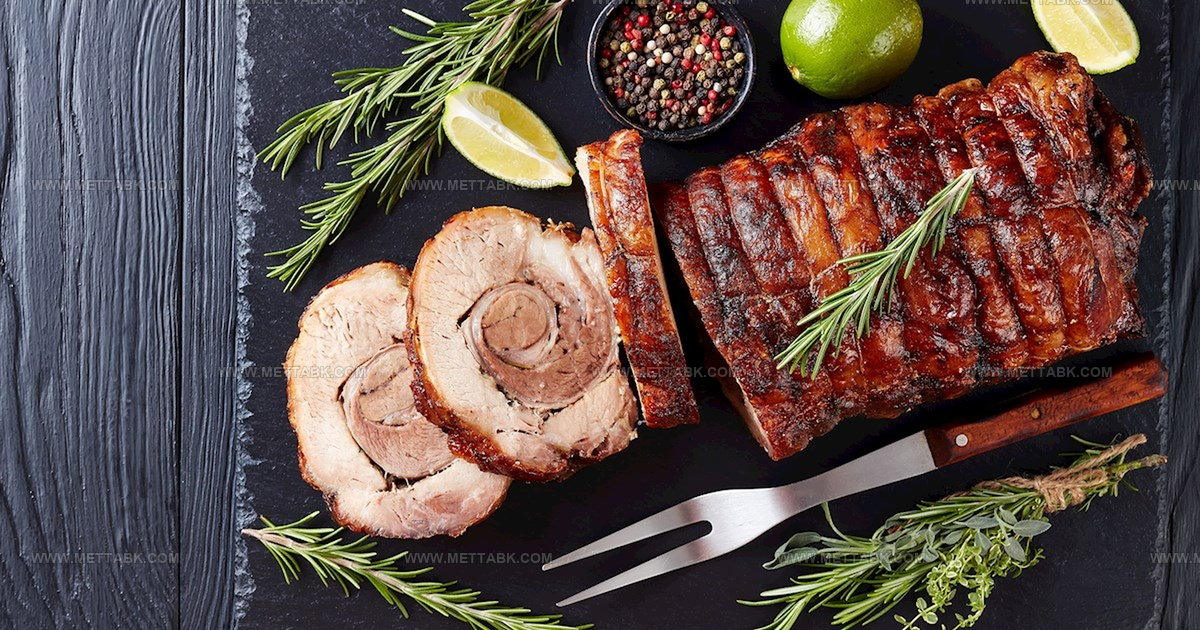

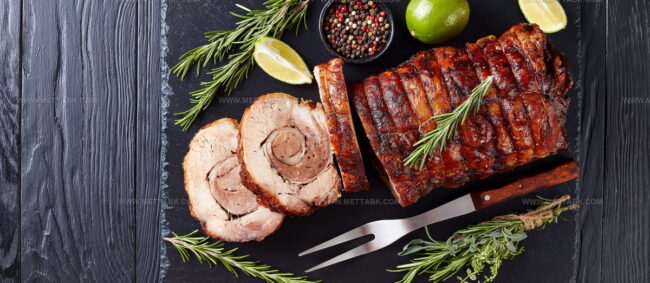
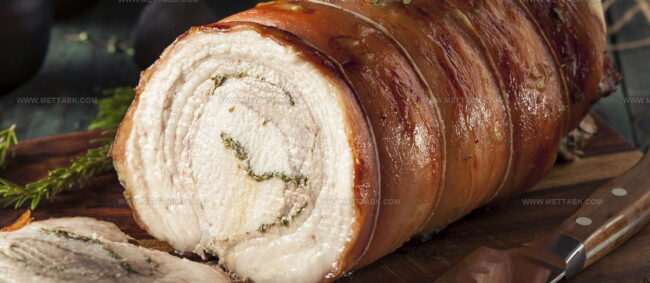
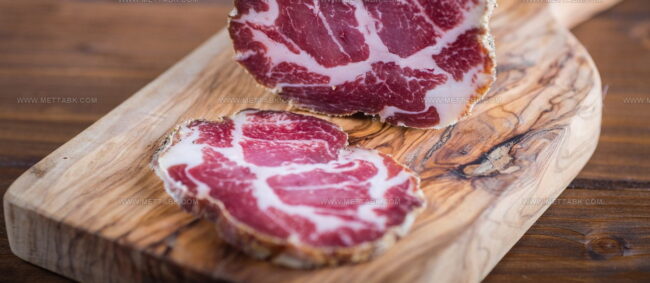

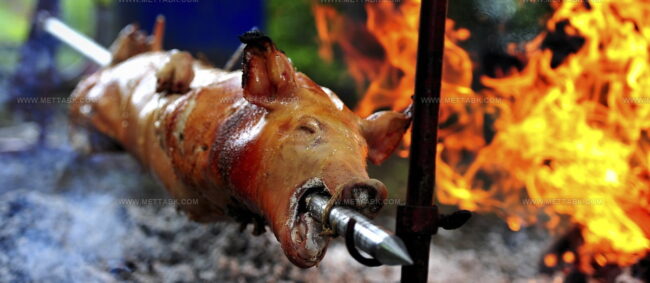
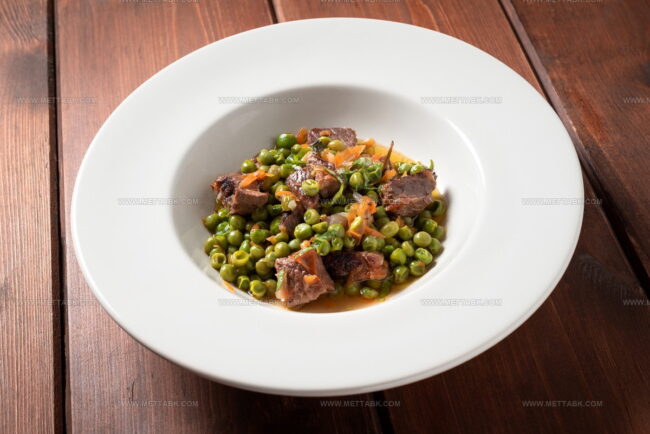
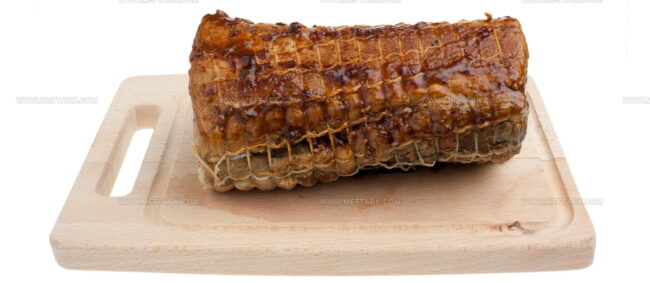
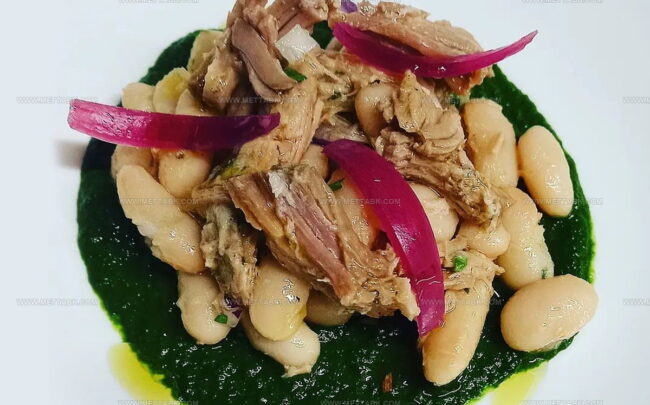
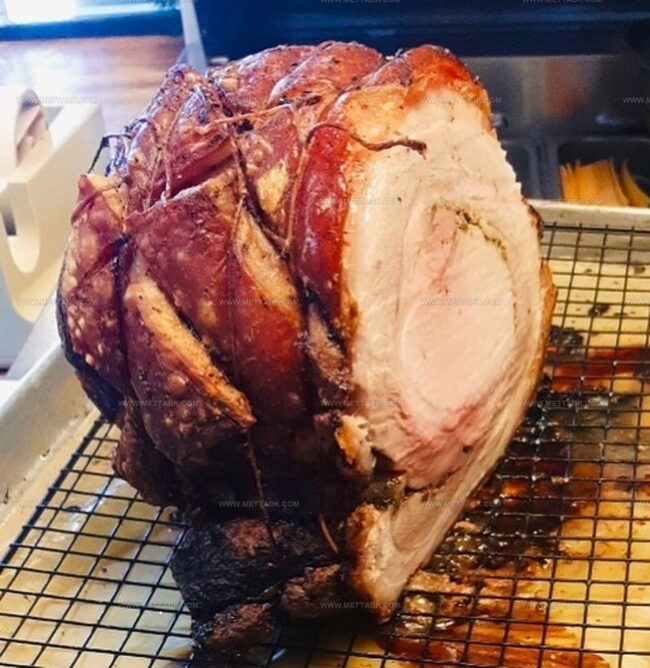
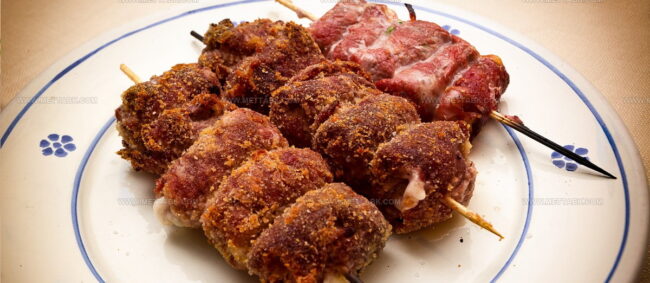
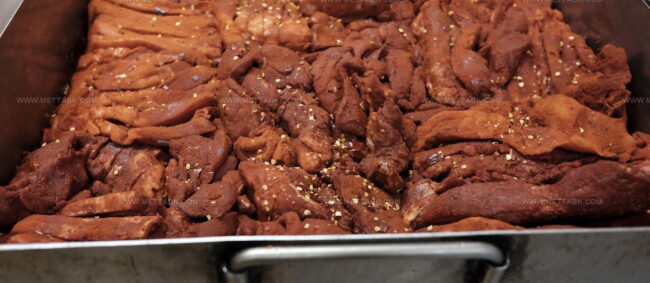
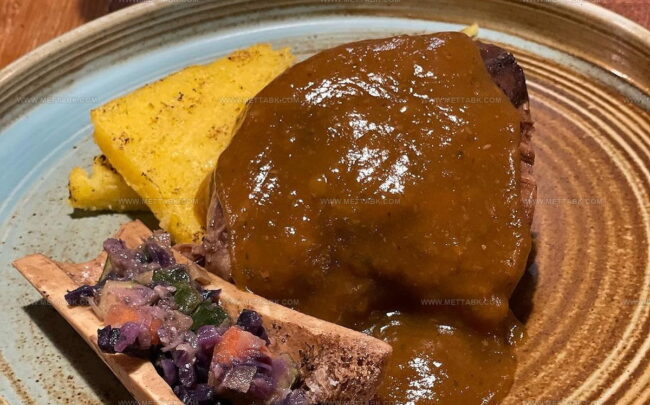
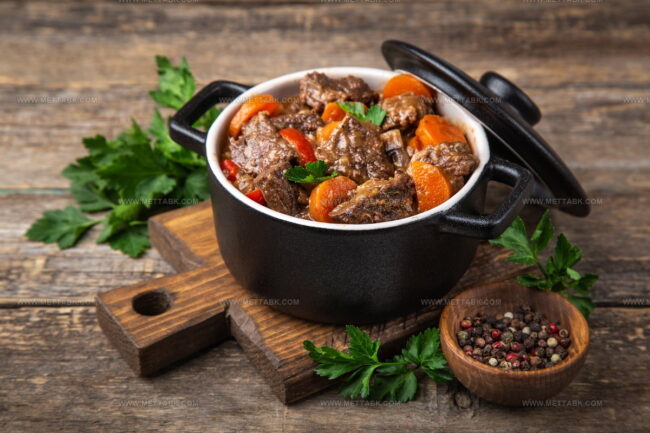
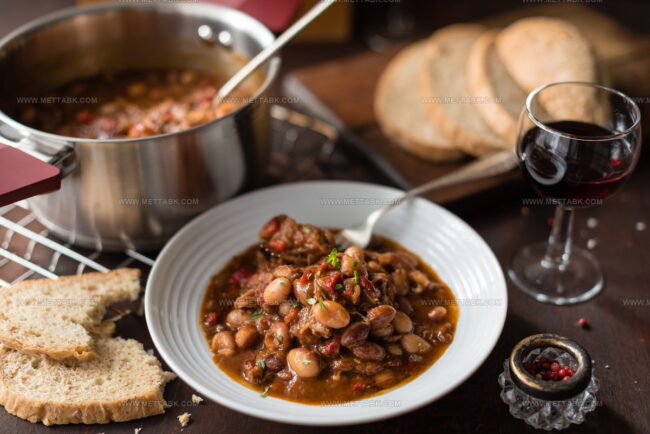
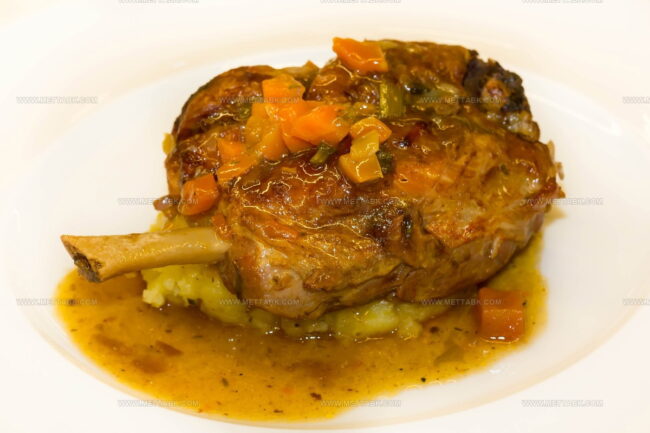

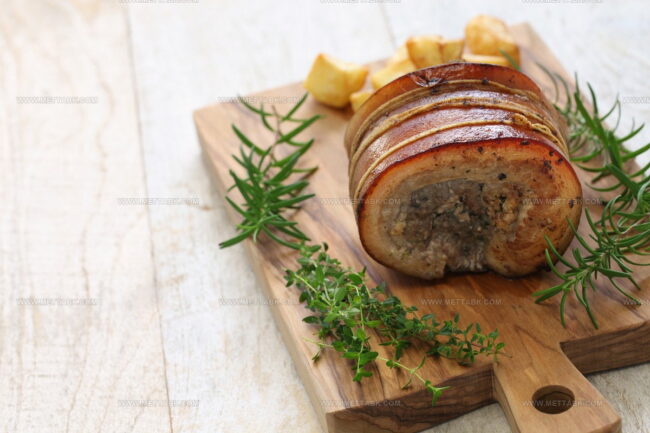

Clara Bennett
Contributing Recipe Developer & Food Writer
Expertise
Baking and Pastry Development, Gluten-Free and Allergy-Friendly Recipe Creation, Culinary Storytelling and Food Journalism, Recipe Testing and Standardization, Southern Comfort Foods and Modern Twists
Education
Sullivan University – National Center for Hospitality Studies
Associate Degree in Culinary Arts
Focus: Baking and Pastry Arts, Recipe Testing, and Culinary Journalism.
Clara specialized in crafting desserts that blend classic Southern comfort with modern techniques, while developing strong writing skills to tell the story behind every dish.
Lane Community College (Certificate Program)
Certificate in Food Writing and Photography
Focus: Culinary storytelling, recipe formatting, food styling, and visual presentation.
Clara’s love of baking started young, powered by homemade pies, biscuits, and stories passed around the family table.
After earning her degree at Sullivan University and a food writing certificate at Lane Community College, she turned her passion into a craft: sharing recipes that are simple, soulful, and always full of heart.
She’s big on bold flavors, flexible ideas, and creating sweets that fit any table (yes, even if you’re gluten-free). When she’s not baking, you’ll find her wandering farmers’ markets, styling food for the next photo shoot, or working on her ever-growing recipe journal.